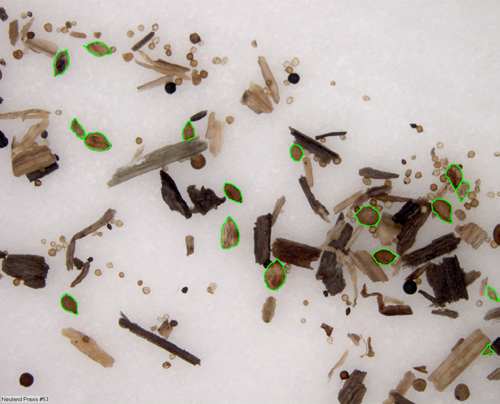Digital phenotyping and digital seed testing essentially have two main parts: image acquisition and feature extraction from the image. The second part is challenging as soon as the background or surrounding is not homogeneous and if non-target objects are present that can be similar to the target objects. The central question is how to find the right objects in a crowded image. Such situations – objects of interest mixed with other objects – occur the more the task move from controlled lab towards agricultural application.
In the PheNeSens project we work on such a task in collaboration with image processing specialists at the Institute of Imaging & Computer Vision of the RWTH Aachen University. We apply samples coming from the monitoring of nematode infestation in the agricultural service of the Julius Kühn Institute. Such samples consist of nematode cyst washed out of the field soil in the root space of sugar beets. They usually contain the cysts together with mineral particles, plant and soil animal debris, and seeds. The non-target objects can share similarity with the cysts in size, shape, and color. Applying advanced machine learning methods, it is possible to discriminate cysts from the other particles and subsequently count and measure the detected cysts. First results of the project work were published in a paper:
Chen L, Strauch M, Daub M, Jansen M, Luigs H-G, Merhof D (2019): Instance Segmentation of Nematode Cysts in Microscopic Images of Soil Samples. 41st Annual International Conference of the IEEE Engineering in Medicine and Biology Society (EMBC). IEEE, pp 5932–5936

